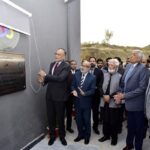 As we now start counting days to finally confront 3G deployment in Pakistan, and even if this sounds hypothetical to many, here is a small series on 3G’s engineering aspects. This series aims to underline a few practical points, and by ‘few’ I really mean a few; because covering anything to everything that falls under the scope of 3G would go beyond my capacity to understand.
As we now start counting days to finally confront 3G deployment in Pakistan, and even if this sounds hypothetical to many, here is a small series on 3G’s engineering aspects. This series aims to underline a few practical points, and by ‘few’ I really mean a few; because covering anything to everything that falls under the scope of 3G would go beyond my capacity to understand.Before we move on, I boldly present a disclaimer that this article and the ones to follow might not be of interest to those who find telecom engineering boring. And so it is advisable that they hit the small ‘x’ at the top right of their browsers and carry on with their chores. For the rest, we start with things to look out for while planning a roll-out of a 3rd generation network.
Inter-System Handover With Existing 2G Networks
In markets like ours where GSM networks are firmly rooted, introduction of 3G network has to be done in a way that new services and data rates meet users’ expectations. Unfortunately, 3G does not carry the same advantage as LTE does, that is of migration from GSM frequencies onto LTE frequencies slowly. So to further exhaust existing GSM networks, operators should add their 3G footprint as an extension to the existing 2G network, that is to start with providing 3G services only in limited, typically urban areas and depending on 3G to GSM inter-system handover to accomplish continuous coverage of basic services.
This will:
- Accelerate 3G roll out
- Make it easy to analyze end-users’ response to 3G services
- Minimize up-front deployment costs
Co-siting 3G Sites With Existing 2G Sites
This is quite an important aspect in trimming capital expenditure while rolling out a 3G network. Besides the perplexing problems it give birth to, co-siting 3G sites with 2G drastically reduces costs and overheads during site acquisition and maintenance.
Just to elaborate the point, here is an example of co-siting 3G sites with 2G. PCCW is Hong Kong’s premier telecommunication provider; when it went for 3G, Huawei co-sited 3G/2G sites in the country. Huawei published in its paper, “Of the sites on the PCCW network, 85% are 2G/3G co-sites. Antenna feeder sharing is adopted in 65% of the 3G base stations, and 70% of the 3G base stations are powered by expanding the original power supply system in the equipment room. In addition, every effort has been made to reduce the rents of the equipment room or the roof to cut operating costs significantly.”
Alongside the issues highlighted above, few more are:
- Should shared antennas be used?
- Will the underlying 2G network meet quality standards required for 3G?
- Interference problems in co-siting
In the next article we shall resolve the above mentioned problems.






